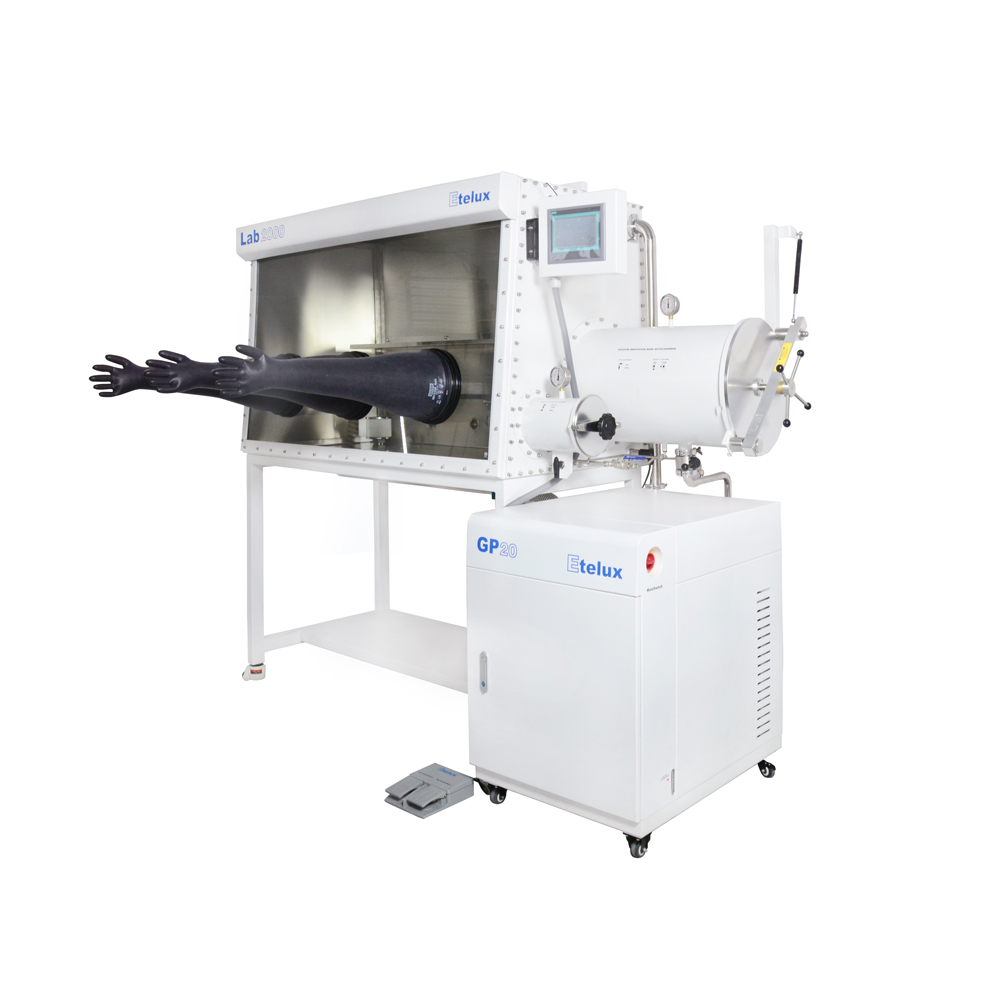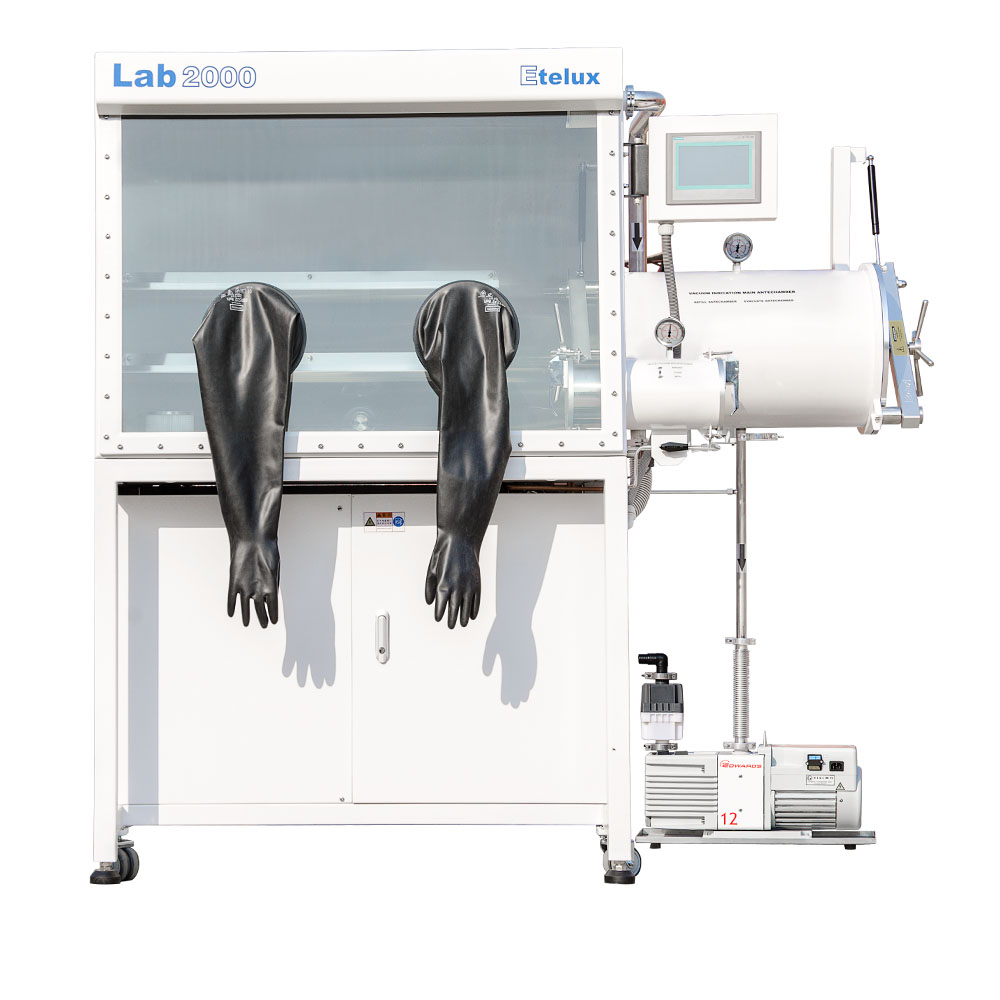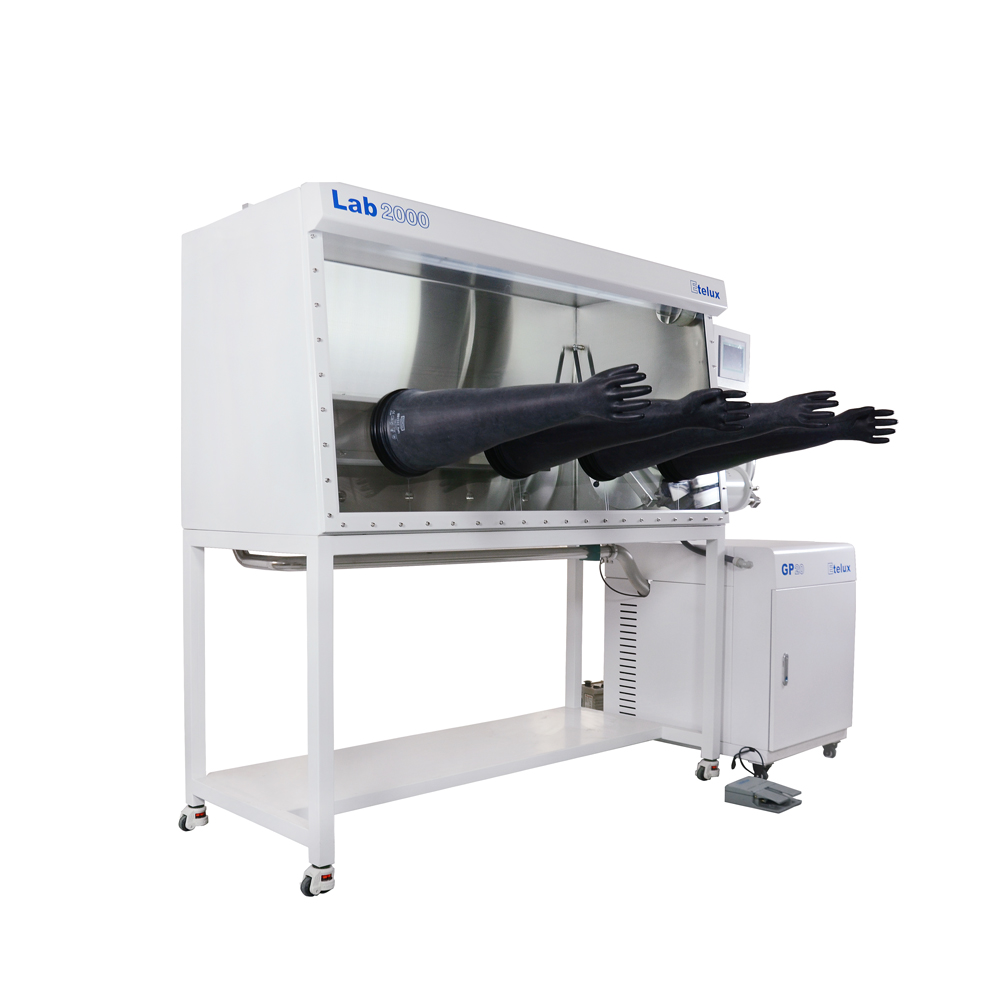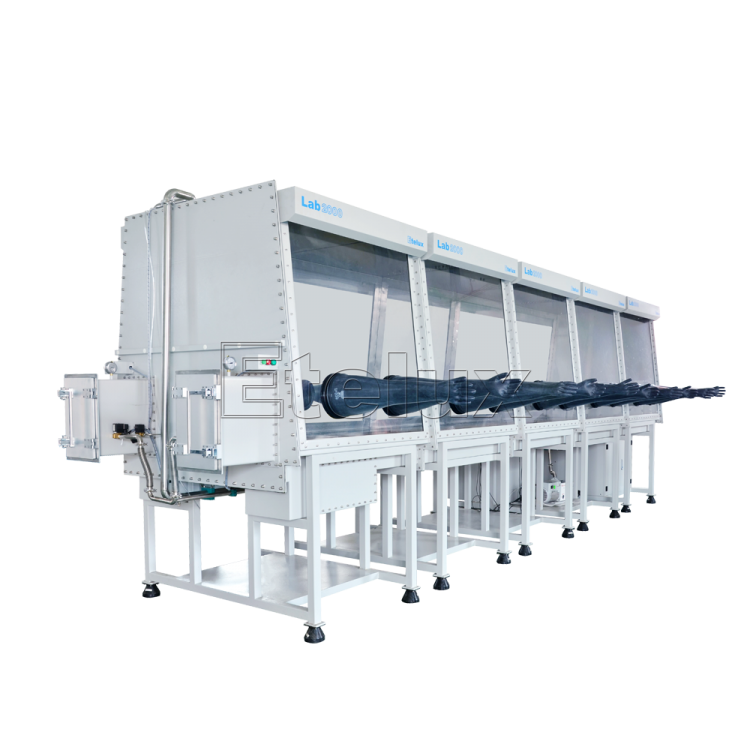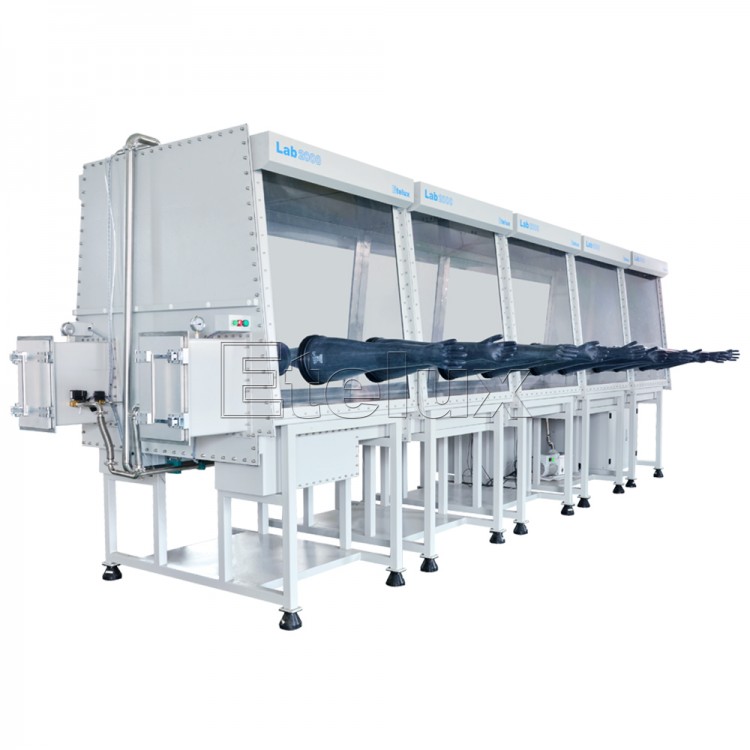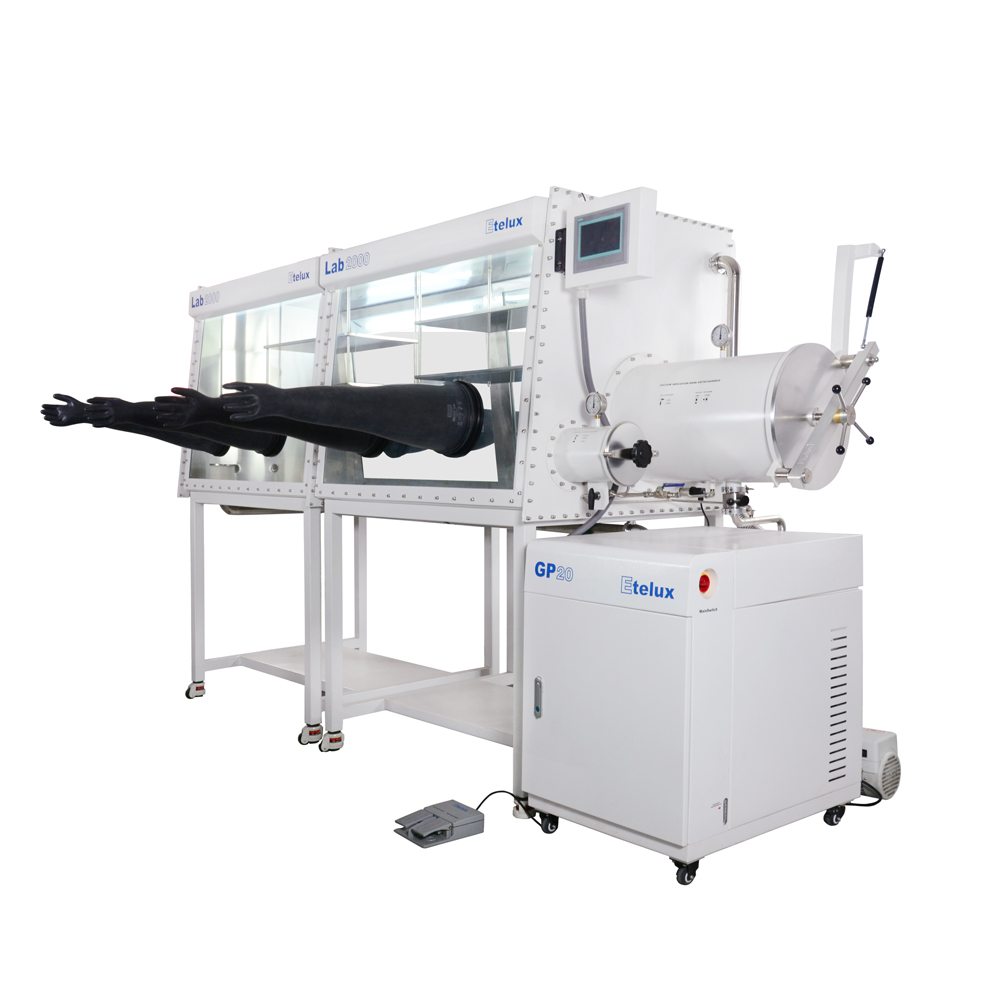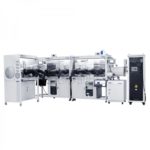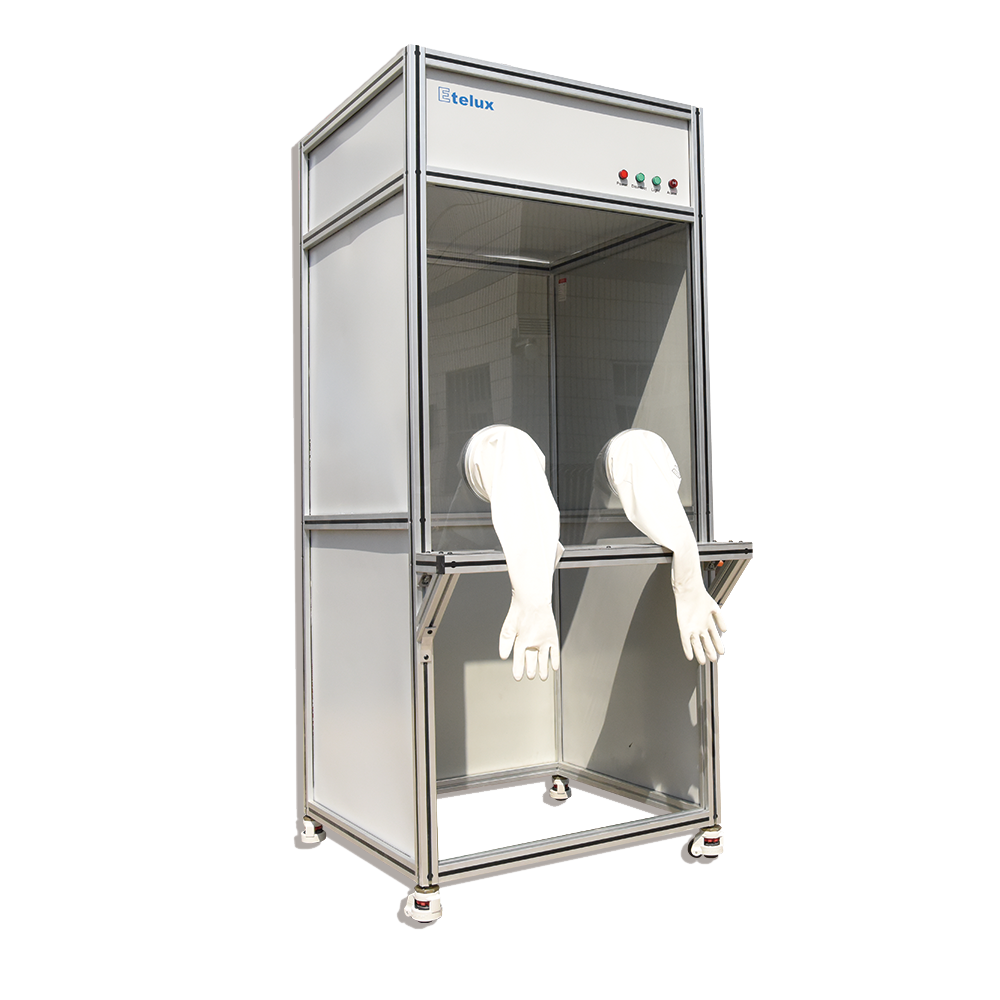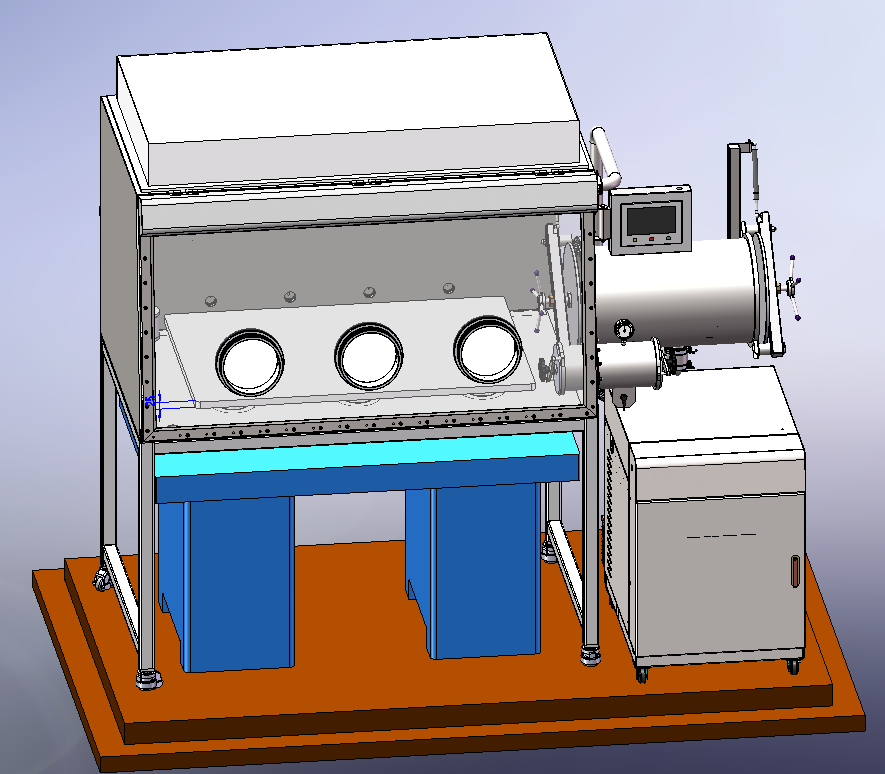Process flow:
1. The “loading conveyor” moves the battery pack of three batteries (hereinafter referred to as “battery pack”) to a designated position in front of the vacuum oven, and stops. The battery pack is moved to the vacuum oven by the “loading robot 1” Inside (the oven is 30 layers, 6 on each layer, a total of 180 batteries can be placed);
2. There are 12 vacuum ovens and 2 cooling ovens in each vacuum baking system. The loading and unloading robot 1 feeds the oven from right to left. It takes about 15 minutes. After the robot finishes feeding the first oven, it feeds the second oven, and so on, between each oven 15 minutes interval; set the heating time (6 hours), the baking temperature is 85 ℃;
3. After the baking is completed, the “loading robot 1” places the battery pack on the “transition conveyor belt”. The “transition conveyor belt” stops the baked battery before being transferred to the cooling box, and the “loading robot 2” will “transition” The batteries on the “conveyor belt” are put into the cooling box in turn, and the door is closed after completion, and the battery is cooled to 45 ° C for five minutes;
4. After the cooling is completed, the door of the cooling box is opened, and the “loading manipulator 2” takes out the battery pack one by one, places it on the “cutting conveyor”, and passes it to the sorting process.
Features of vacuum oven
1. Baking mode: the battery is placed directly on the heating plate, vacuumized and dried quickly;
2. The sealing material on the automatic door is fluorine rubber, and the sealing surface on the oven is water-cooled;
3. With online water analysis and prediction function;
4. Outsourcing insulation cotton in the oven to reduce loss;
View more glove boxes at www.etelux-glovebox.com.

















